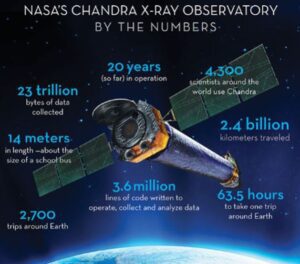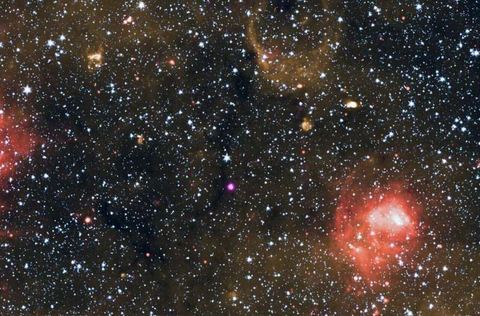Discovering a genuinely unique magnetar was the highlight of 2020! Astronomers introduced the new “member” to an exclusive family of exotic cosmic bodies.Â
NASA’s Chandra X-ray offered essential data and supported the idea that the magnetar is also a pulsar.
Here is what you need to know.
What is a Magnetar?
A magnetar is part of an intriguing category of neutron stars. It’s an extremely thick object, made up of compressed neutron, which forms from a massive star’s fallen core during a supernova.
However, magnetars are apart from other neutron stars because they have the most powerful magnetic field in the Universe. Their magnetic fields are approximately a million billion Gauss. But that’s not all.
If, let’s say, a magnetar would be at around 40,000 miles to the Moon, it would erase the data from all our credit cards.Â
Chandra X-ray’s Fantastic Observations: Insights

Chandra X-ray left astronomers in awe with its intriguing observations. According to the data, the magnetar, dubbed J1818.0-1607, is enclosed by diffuse X-ray emissions.
Also, X-rays from Chandra offered the perfect image of the magnetar in purple, unveiling its location.Â
J1818.0-1607 is close to the plane of our galaxy at a length of approximately 21,000 light-years from Earth.
Previous observations imply that the magnetar has features similar to that of a typical rotation-powered pulsar. So far, only five magnetars have been categorized as pulsars, which is less than 0.2 % of the known neutron star family.
Have a quick look at Chandra’s findings:
Other significant details
The burst that made a magnetar of this age might have left behind traceable debris.Â
Besides the Chandra data, astronomers used more infrared data from the Spitzer space telescope and radio data from the VLA (Very Large Array). They found possible proof for a remnant, but far away from the magnetar.Â
To reach that, the magnetar would need to reach some impossible speeds. The results would still have been uncertain.
More research is still needed to figure out more things about the magnetar.












Leave a Reply